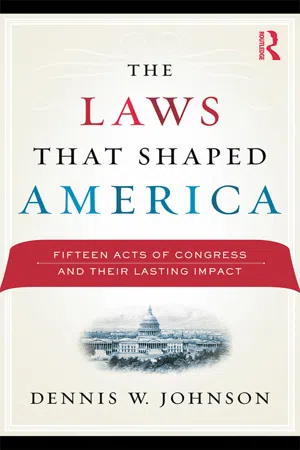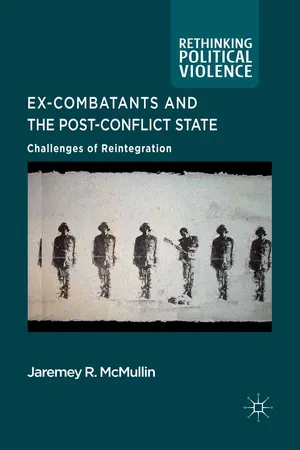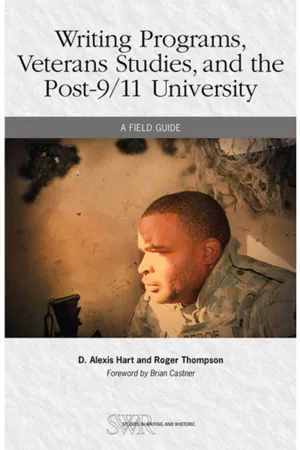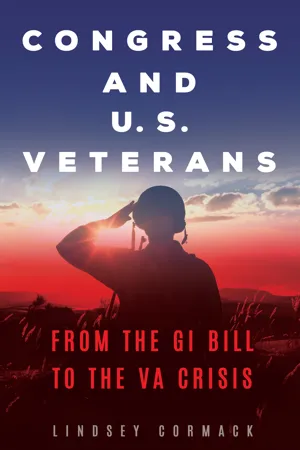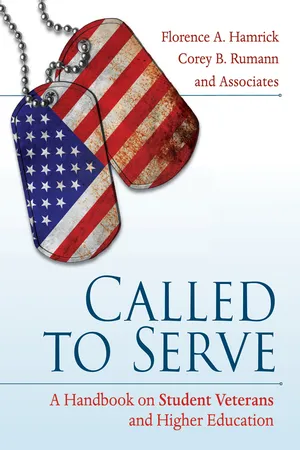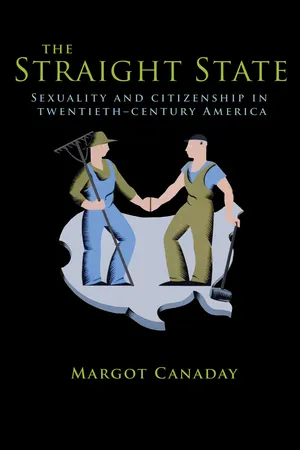History
G.I. Bill
The G.I. Bill, officially known as the Servicemen's Readjustment Act of 1944, was a landmark piece of legislation in the United States. It provided a range of benefits to World War II veterans, including financial assistance for education, housing, and business loans. The G.I. Bill played a significant role in helping millions of veterans transition to civilian life and contributed to the post-war economic boom.
Written by Perlego with AI-assistance
Related key terms
Related key terms
1 of 4
Related key terms
1 of 3
12 Key excerpts on "G.I. Bill"
- eBook - ePub
The Laws That Shaped America
Fifteen Acts of Congress and Their Lasting Impact
- Dennis W. Johnson(Author)
- 2009(Publication Date)
- Routledge(Publisher)
7 THE PROMISE TO AMERICA’S VETERANS
The GI Bill of 1944
Clark Kerr, president emeritus University of California (1994)Long live the GI Bill of Rights!Peter F. Drucker (1993)The GI Bill of Rights—and the enthusiastic response to it on the part of America’s veterans—signaled the shift to the knowledge society. Future historians may consider it the most important event of the twentieth century.The GI Bill of 1944 has been hailed by educators, social scientists, and historians as one of the most important pieces of legislation in the twentieth century. Enacted three weeks after the D-Day invasion of Normandy, and over thirteen months before the end of hostilities in the Pacific Theater, the GI Bill was a multi-dimensional piece of legislation that provided returning veterans with unemployment compensation, low-cost loans to purchase homes or businesses, and educational benefits. The legislation was enacted out of a sense of obligation to the millions of men and women who served in the armed forces; but the chief concern of the Roosevelt Administration, Congress, and the veterans’ organizations that lobbied hard for this legislation was to prevent a return of economic hard times and political instability. The education of returning veterans was only of secondary concern. In fact, few policymakers in Washington predicted that veterans would jump at the chance for free college tuition or on-the-job training programs. But jump they did, flooding colleges and universities in the five or six years after World War II, and, to an even greater extent, flooding non-college programs, like on-the-job training, correspondence schools, and even programs for the completion of high school. It was the education provision of the GI Bill that proved to have the most far-reaching impact on American society.The GI Bill’s promise of educational assistance was an unusual feature in the history of veterans’ benefits. Some educational relief was given to World War I disabled veterans, but typically the federal government gave only mustering-out pay, cash bonuses, or surplus public land. Following each American war, Congress has provided some level of benefits for its veterans, their widows, and survivors. Congress responded out of a sense of gratitude, but it was also prodded by organized veterans’ organizations: the Society of the Cincinnati following the Revolutionary war, the United Brethren of the War of 1812, the National Association of Mexican War Veterans, and especially the Grand Army of the Republic following the Civil War. At times, the grants had been quite generous, particularly for Civil War and Spanish-American war veterans; and, by the beginning of the twentieth century, veterans’ benefits constituted approximately 40 percent of the entire federal budget. - eBook - ePub
Paid Patriotism?
The Debate over Veterans' Benefits
- James T. Bennett(Author)
- 2017(Publication Date)
- Routledge(Publisher)
4The 1944 GI Bill: Hype ExemplifiedThe Servicemen’s Readjustment Act of 1944, or GI Bill, may be the least controversial and most lauded major public policy measure ever enacted in the United States. Journalists shower it with nostalgia-crusted encomia; politicians stumble over each other to claim that their pet project is its natural heir; and even scholars "veer toward hagiog-raphy," as one of their number admitted, when treating the subject.1"I cannot overstate the value and meaning of the GI Bill," wrote Michael J. Bennett, one such panegyrist. "Its sweep was so vast, its impact so particular, that only one conclusion seems self-evident: The bill made a reality of Jefferson’s concept of creating independent yeomen."2 We may wonder whether a nation of independent yeomen can be created, paradoxically, by an extensive program of the federal government. Bennett, who insists that the GI Bill "made modern America," is one of many who wax rhapsodic over the GI Bill.3 Political scientist Milton Greenberg, provost of American University, called it "revolutionary" and "one of the major tipping points in American history."4 Typical of journalistic inflation was Patrick Owens’s claim in Newsday that "Except for the Homestead Act of the last century, it is doubtful whether any single legislative enterprise has done so much as the GI Bill to open up opportunity for talented people."5 One need not be a habitual debunker or curmudgeon to ask just how extensive an overlap there is between myth and fact.The GI Bill’s major provisions included educational and vocational training; unemployment compensation; mustering-out pay (which was separated from the omnibus bill); loans to veterans wishing to buy a home, farm, or business; and hospitalization and disability for the wounded. Responsibility for administering this cluster of programs was centered in the Veterans Administration, which, unlike the other New Deal-era agencies, was beholden to veterans. - eBook - ePub
The High Cost of Good Intentions
A History of U.S. Federal Entitlement Programs
- John F. Cogan(Author)
- 2017(Publication Date)
- Stanford University Press(Publisher)
9 A New Kind of Entitlement The GI BillWe may be a war-weary people by the time we have shattered the Axis. . . . There will be an urge to let down after the fast pace we maintained to win this war, to dump men willy-nilly back into civilian life, to let them find a job as best they can and where they can. . . . But the Army will not take that easy way.Robert P. Patterson, assistant secretary of war, 19431THE SERVICEMEN’S READJUSTMENT ACT OF 1944 was the only major new entitlement created during World War II. Popularly known as the GI Bill, the law granted educational assistance, cash readjustment assistance, and government-backed home, farm, and business loan guarantees to all veterans regardless of their disability status. The educational program provided aid for tuition, books, supplies, and living expenses while the veteran was in school. The GI Bill is important for three reasons.First, the law permanently established as national policy the view that society owed a debt to all wartime veterans, not just to those who had suffered from disabling wartime injury or illness. Moreover, the law’s underlying premise was that all wartime veterans should, to the extent possible, be assisted in returning to the status in civilian life that they had achieved when they had departed for war. The policy and the premise were sharp departures from prior wartime veterans’ programs that had initially restricted benefits to veterans who suffered wartime injuries.Second, the GI Bill’s noncash, or in-kind (as they are now called), benefits were a new type of entitlement benefit. Entitlements to in-kind benefits bestow a right to reimbursement on people and institutions that provide the benefits prescribed by the law. Under the GI Bill, educational institutions, college professors, training instructors, and school administrators were entitled, directly or indirectly, to compensation for the educational services they provided to veterans. Bankers and financial institutions that provided guaranteed home loans were entitled to receive repayments from the government on defaulted loans. These service providers had a vested financial interest in the program. Along with veterans’ organizations, their lobbies were powerful advocates for maintaining and expanding benefits. - eBook - ePub
Ex-Combatants and the Post-Conflict State
Challenges of Reintegration
- J. McMullin(Author)
- 2013(Publication Date)
- Palgrave Macmillan(Publisher)
Such fears influenced the passage of the Servicemen’s Readjustment Act on 22 June 1944, popularly known as the GI Bill. Ultimately, nine million of the estimated 16 million American WWII veterans benefited from the bill’s provisions of free higher education and vocational training, and living stipends while veterans were studying. Veterans could also access additional support: liberal unemployment benefits, an expansive healthcare entitlement, and easy access to home, farm, and business loans. At the time, the GI Bill was the largest social welfare program in the US, representing 15% of the federal budget in 1948. It has since been described as ‘the most significant piece of legislation both in the history of American social welfare policy and in the formation of postwar American society’. 42 The GI Bill had numerous spillover effects, too; it is credited with democratizing access to higher education and transforming higher educational institutions across America, with moving more Americans into the middle classes, and with promoting the post-war economic boom of the 1950s. But these benefits were not the result of strategic, purposeful planning. Keith W. Olson, in his influential 1974 history of the legislation, contends that Congress gave no thought to the impact the bill would have on higher education or long-term social policy, and instead was motivated only by security concerns about the threat that ex-combatants posed to the state. 43 Like the bonus payment, the GI Bill was the policy response to a securitized debate about the place of veterans in post-war American life. Policy elites worried that the return of 16 million unemployed veterans could trigger another depression, social instability, and even communist revolt of the working class. The security fears underpinning the passage of the GI Bill echo modern security discourse of DDR - eBook - ePub
- D. Alexis Hart, Roger Thompson(Authors)
- 2020(Publication Date)
The context of the first GI Bill established a precedent in the goals of veteran postmilitary education funding that has persisted despite significant changes to student demographics and the sociopolitical and cultural changes to service in the US Armed Forces over the last seventy years. The primary contingency that gave rise to the 1944 GI Bill was the perceived need to advance an economic agenda that was in no small part derived from anxiety about the economic stability of postwar America. As the VA's preamble summarizes it, the Servicemen's Readjustment Act of 1944 “was seen as a genuine attempt to thwart a looming social and economic crisis. Some saw inaction as invitation to another depression” (“History”). With thousands of personnel returning from foreign duty and with a labor force decimated by a persistent and expansive global war, many economists and policymakers worried publicly about the viability of the United States’ industrial engine. Military spending in the years just after the war dropped by nearly 90 percent (Higgs 8), much of that due to the release of veterans into the civilian workforce. But, without the proverbial war machine, employment was a primary concern of not only the veterans themselves, but the United States Congress as well.As a result, many saw the returning (male) veteran as a vehicle for industrial and commercial productivity. Certainly, many policymakers lauded the return of “heroes” and their victories abroad against tyranny, but such adulation ran alongside genuine fear that without a war machine driving economic growth, many working-age men would be left without jobs and without pathways to find new work. That the GI Bill provided for especially attractive home loans and a simple base pay testifies to this anxiety in perhaps the clearest way, but the incentive to send veterans to college campuses was no less driven by the desire to ensure vocational successes and productivity. As a result, the higher education portion of the original GI Bill emphasized, albeit sometimes only tacitly, the need for veterans to study toward gainful employment.6 - eBook - ePub
Congress and U.S. Veterans
From the GI Bill to the VA Crisis
- Lindsey Cormack(Author)
- 2018(Publication Date)
- Praeger(Publisher)
6The Serviceman’s Readjustment Act of 1944
The first GI bill, known as the Serviceman’s Readjustment Act, passed on June 12, 1944, by a 1-vote margin in the Senate and was signed into law 10 days later by President Franklin Delano Roosevelt. As the close vote indicates, public and political opinions were not as closely aligned behind government programs subsidizing educational opportunities for veterans as they are nowadays.The VA was not directly tasked with providing higher educational assistance until the 1944 statute. After World War II the amount of government money available to support service members pursuing a college degree led to great enrollment rates among service members. Compared to similarly situated men who did not serve, members who could avail themselves of higher education with government assistance were significantly more likely to do so.7 For the nationwide graduating class of 1949, 70 percent were veterans.8 In total this bill sent 2,232,000 veterans to secondary education or apprenticeship programs at the cost of $5.5 billion.9 While the influx of enrollees overwhelmed some schools and led to increased class sizes, academic administrators at the time generally reported that veterans were a privilege to instruct and good for the university enterprise.10 - eBook - ePub
Called to Serve
A Handbook on Student Veterans and Higher Education
- Florence A. Hamrick, Corey B. Rumann(Authors)
- 2012(Publication Date)
- Jossey-Bass(Publisher)
Student veterans who joined the military to earn educational benefits may become frustrated as they attempt to navigate the bureaucracy that administers those benefits. Campus representatives who are committed to assisting student veterans should be sufficiently familiar with the range of benefit programs to engage students in meaningful, helpful, and accurate conversations about veterans' and service members' educational benefits. The purpose of this chapter is to provide basic information about various programs and introduce the nomenclature associated with specific programs, since familiarity with that language can help individuals avoid misunderstandings and confusion.Legacy GI Bill Programs
To the uninitiated, the name “GI Bill” harkens images of fresh-from-the-war military service members enrolling in college and enjoying free rides (full scholarships) to achieve their college degrees. In reality, the GI Bill is a shorthand call sign for a wide range of U.S. Department of Veterans Affairs (VA) education funding programs available to U.S. military veterans based on a complex algorithm of length and type of service. Since its origin as the Servicemen's Readjustment Act of 1944, the GI Bill has evolved to serve each successive generation of veterans. As the United States involves itself in various military engagements worldwide, the obligation to the education of service men and women has been met with varying degrees of political scrutiny, goodwill, and public support. To understand today's GI Bill and student veteran education, one must first understand the evolution of the original GI Bill, which is introduced in Chapter One and elaborated in this chapter with respect to student-level circumstances and impacts.When the GI Bill was first enacted, higher education was largely a privilege reserved for the wealthy (Hunt, 2006). Initial contemporary predictions forecasted that, at most, one million World War II veterans would take advantage of the new benefits. In fact, over two million veterans, both men and women, pursued higher education using GI Bill benefits (Bellafaire, 2006). The Women in Military Service for America Memorial Foundation noted that “women veterans . . . were even more interested than their male counterparts in obtaining a college degree; more than 19.5 percent of 332,178 eligible women veterans elected to attend college after the war as compared to 15 percent of 15 million eligible male veterans” (Bellafaire, 2006, para. 2). - Jan Arminio, Tomoko Kudo Grabosky, Josh Lang(Authors)
- 2014(Publication Date)
- Routledge(Publisher)
Fortunately, Representative John Gibson of Georgia provided a tie-breaking vote, which allowed the Senate to approve the final form of the bill on June 12 and the House on June 13 (U.S. Department of Veterans Affairs, 2013a). Benefits included mustering-out pay, unemployment insurance, educational benefits, and adequate health care (Keene, 2001). According to Keene (2001), the GI Bill was “the most comprehensive piece of social welfare legislation the United States has ever known … ensuring that history did not repeat itself became the primary objective both of the U.S. Army and of Great War Veterans” (p. 205). The public was generally favorable to these ideas, and the bill was considered the largest advancement of a veteran education program. The purpose of the GI Bill was not only to offer benefits to veterans but also to keep as many veterans as possible off the unemployment lines and reentering the job market. Roosevelt’s administration had already tested a work-study program that was part of the National Youth Administration (NYA) which paid students to stay in college during the post-depression era (Bower, 2004). This program “allowed college officials to select which of their students would receive aid and what type of work they would perform in return. Thus, not only would students receive the means to stay in school, but colleges would also receive a labor force” (Bower, 2004, p. 368). Students remained in school, out of the labor force, but also hopeful in the context of dire economic and geo-political conditions. In 1937 the NYA determined that verifying financial need was a requirement of the program, prompting some institutions to bow out. However, for the most part, according to Bower, this “brought New Deal-style liberalism to colleges and universities in a manner that silenced the wary and even won converts to the idea of federal involvement in postsecondary education” (p- eBook - ePub
Failing Our Veterans
The G. I. Bill and the Vietnam Generation
- Mark Boulton(Author)
- 2014(Publication Date)
- NYU Press(Publisher)
3A Peacetime Bill for the Warrior Shortchanging the Vietnam VetsOne of the virtues of the World War II GI Bill was that it provided scholarship money for young men from working-class and lower middle-class backgrounds who would otherwise have had little opportunity for further education. On the surface, the GI Bill enacted in 1966 seemed to do the same thing, but in reality, the level of benefits was so low that participation was greatly restricted for veterans of lower class families who lacked additional resources to draw upon for support.—The Nader Report , 1973I am a Vietnam veteran … with combat experience. I had to endure a great deal of suffering and all I wish now is to have a fair reimbursement from the government for my education. —Michael W. Dubrick, April 28, 1972 We recognize the GI Bill was not designed—and given the diversity of tuition charges among schools, could not be equitably designed—to cover all of a veteran’s educational costs. —Olney B. Owen, Veterans Administration, November 30, 1971Both during and immediately after the passage of the 1966 G.I. Bill, questions arose about whether the bill had gone far enough in providing adequate readjustment benefits for the new generation of veterans returning to civilian life. The government did, at least, recognize the limitations of the 1966 bill, and soon after its passage both Congress and the Johnson administration examined the option of raising the education benefits. In September 1966, Johnson created a special task force by executive order to examine veterans’ benefits. William Driver chaired the task force, which also included representatives from the DOD, the BOB, and the Department of Health and Welfare. Their report, submitted on November 19, included a proposal to increase the monthly allowance to $130 for the single veteran, up from $100, with comparable increases for veterans claiming dependents. The task force also recommended that veterans should be allowed to finish their high school degrees without having to cut into the number of months for which they could claim benefits for higher education. Johnson took the recommendations to heart and sent a special message to Congress on January 31, 1967, on “America’s Servicemen and Veterans.” The main purpose of his proposals was to “remove the inequalities in the treatment of our Vietnam veterans” and, in keeping with the ideals of the Great Society, “to enlarge the opportunities for educationally disadvantaged veterans.”1 Johnson praised the nation’s servicemen and women for “again fighting and giving their lives in the defense of freedom” and added, “It is essential that we convey to them … our full recognition and gratitude for their service in Vietnam and in other troubled areas of the world.”2 - eBook - ePub
Aging Veterans with Disabilities
A Cross-National Study of Policies and Challenges
- Arie Rimmerman(Author)
- 2020(Publication Date)
- Routledge(Publisher)
Post-World War 2 policies were overshadowed by the Korean and Vietnam wars and by the expansion of claims and VA health facilities. Following the outbreak of the Korean War in June 1950, Congress passed the Vocational Rehabilitation Act of 1950. The act intended to help Korean War veterans find employment after losing their pre-war jobs due to disabilities caused by war. The Veteran’s Readjustment Assistance Act of 1952, called the Korean GI Bill, provided unemployment insurance, job placement, home loans, and mustering-out benefits similar to those offered to World War 2 veterans. However, the Korean GI Bill was less generous than the original GI Bill as it reduced financial benefits and imposed new restrictions on funding of educational programs (Bound & Turner, 2002).The expansion of the VA was remarkable, serving millions of veterans with respect to medical care, financial assistance, and insurance. At that time, the Ex-Servicemen’s Unemployment Compensation Act of 1958 provided unemployment insurance to veterans and for the first time included peacetime veterans (Whittaker & Isaacs, 2008). In 1959, the VA changed the sliding scale of pension payments based on the recipient’s income (including spouse’s income) rather than a flat rate-rate pension.The Vietnam War challenged federal government policies primarily because of the high number of veterans with disabilities resulting from this war. By 1972, there were 308,000 veterans with disabilities connected to military service. The anti-war climate made the struggle of returning veterans more difficult, with many reporting that they were isolated and abandoned by society. In addition, it was a time of economic recession with a high rate of unemployment (Figley & Leventman, 1980). Government response was the passage of the Veteran’s Readjustment Benefits Act (1966), called the Vietnam GI Bill, which restored educational benefits to veterans. Under this act, veterans who had been on active duty for more than 180 consecutive days were entitled to one month of educational assistance for each month of service. This was later increased to one and one-half months for each month of service (Ridgway, 2011). An additional provision for Vietnam veterans was the Servicemen’s Group Life Insurance. The program began with $10,000 maximum coverage, which was increased over the years to the December 1992 maximum of $200,000.Congress initiated a program of mortgage life insurance for veterans with severe disability to assist those in need of specially adapted housing. The insurance covered mortgages up to a maximum of $30,000. By 1992, coverage had increased to $90,000 (Vigdor, 2006). In 1980, Congress changed vocational rehabilitation training, so that veterans with disabilities who trained were guaranteed job placement as well as independent living assistance (Bordieri & Drehmer, 1984). - eBook - ePub
A Hinge of History
Governance in an Emerging New World
- George P. Shultz, George P. Shultz, James Timbie(Authors)
- 2020(Publication Date)
- Hoover Institution Press(Publisher)
We might relate a personal story about a positive experience with a work-based educational credit accrual system administered by the federal government: the GI Bill. One of your authors gained deferred admission to an industrial economics PhD program at MIT after earning an undergraduate degree at Princeton in 1942. But the Second World War, which meant three years as a US Marine in the Pacific, intervened. Upon their return to Massachusetts, both he and his wife, herself a veteran and nurse, were able to access GI Bill voucher funds to launch new interests and careers (and even to guarantee their $10,000 mortgage on a house). The GI Bill was an example of the US military’s facing the same sorts of questions that we expect will become more common among the future workforce: what do you do with capable persons who nonetheless quickly find themselves needing to take on new skills or entirely new careers in the face of changing labor needs? The GI Bill’s answer was not to give veterans cash as a cushion against temporary poverty, or to start a new Washington-directed jobs program, but rather to explicitly invest in their educations or entrepreneurial motivations to enable self-reinvention and self-improvement as decided by the recipients themselves. Follow-ons from the GI Bill still help about 1 percent of Americans—veterans or their families—today. But it was and is expensive. It cannot be spread to cover the totality of the US population. Its principles, however, are worth mimicking: how to make oneself more job eligible and get back into productive work.Unemployment insurance as we have described it here does not operate in a vacuum. Rather, it interacts through a web of other entitlements, job-training efforts, and childhood-support and poverty-alleviation transfer programs. Perhaps the best of these, from a work-incentives perspective, is the Earned Income Tax Credit, which was enacted in the mid-1970s and expanded in the 1986 tax reforms. The credit, which costs the federal government about $70 billion per year, is designed to magnify the earnings of prime-age, low-income workers (particularly those with children). For example, a married couple with one child living in their household will see an additional thirty-four cents for every dollar earned up to their first $10,000 or so in annual income. That credit is then gradually reduced toward zero as incomes rise beyond about $19,000, so it is well-targeted at those who need it most—working heads of household. The overall idea is to ensure that a parent who works full time will be able to keep their household out of poverty. So far, so good. - eBook - ePub
The Straight State
Sexuality and Citizenship in Twentieth-Century America
- Margot Canaday(Author)
- 2009(Publication Date)
- Princeton University Press(Publisher)
Sexual Behavior in the Human Female (Philadelphia: Saunders, 1953), 446–501.16 Veterans from the Revolutionary War, the Civil War (not including Confederate soldiers), the Spanish-American War, and World War I all received some form of compensation from the federal government—typically land grants, cash bonuses, or pensions. Sparks, “The G.I. Bill,” 57. See also Theda Skocpol, Protecting Soldiers and Mothers: The Political Origins of Social Policy in the United States (Cambridge, MA: Belknap Press, 1992).17 Sar Levitan and Karen A. Cleary, Old Wars Remain Unfinished: The Veterans Benefit System (Baltimore: Johns Hopkins University Press, 1973), 27; U.S. Congress, Senate, Committee on Finance, Providing Federal Government Aid for the Readjustment in Civilian Life of Returning World War II Veterans , 78th Cong., 2nd sess., March 18, 1944, 2.18 Charles G. Bolte, The New Veteran (New York: Raynal and Hitchcock, 1945), 49.19 U.S. Congress, Senate, Committee on Military Affairs, Hearings on S. 1730 and S. 1893 , 78th Cong., 2nd sess., June 14, 1944, 343.20 Alfreda Stanley, “A Study of the Moving Person in War-time: A Sampling of Clients Known to the USO-Travelers Aid Service in New Orleans” (master’s thesis, Tulane University, 1947), 32 in box 24, Travelers Aid Association Records.21 Amenta and Skocpol, “Redefining the New Deal,” 85–86.22 Frydl, “The G.I. Bill,” 47.23 Ibid., 23.24 Ibid., 75.25 Amenta, Bold Relief , 243.26 Frydl, “The GI Bill,” 150, 402.27 The elections of 1942 brought a conservative coalition into power that began dismantling New Deal programs. The pendulum swung back a bit in 1944 when the election returned twenty-four seats to the Democrats, but the overall culture in Congress remained conservative. Brian Waddell, The War against the New Deal: World War II and American Democracy
Index pages curate the most relevant extracts from our library of academic textbooks. They’ve been created using an in-house natural language model (NLM), each adding context and meaning to key research topics.
Explore more topic indexes
Explore more topic indexes
1 of 6
Explore more topic indexes
1 of 4
